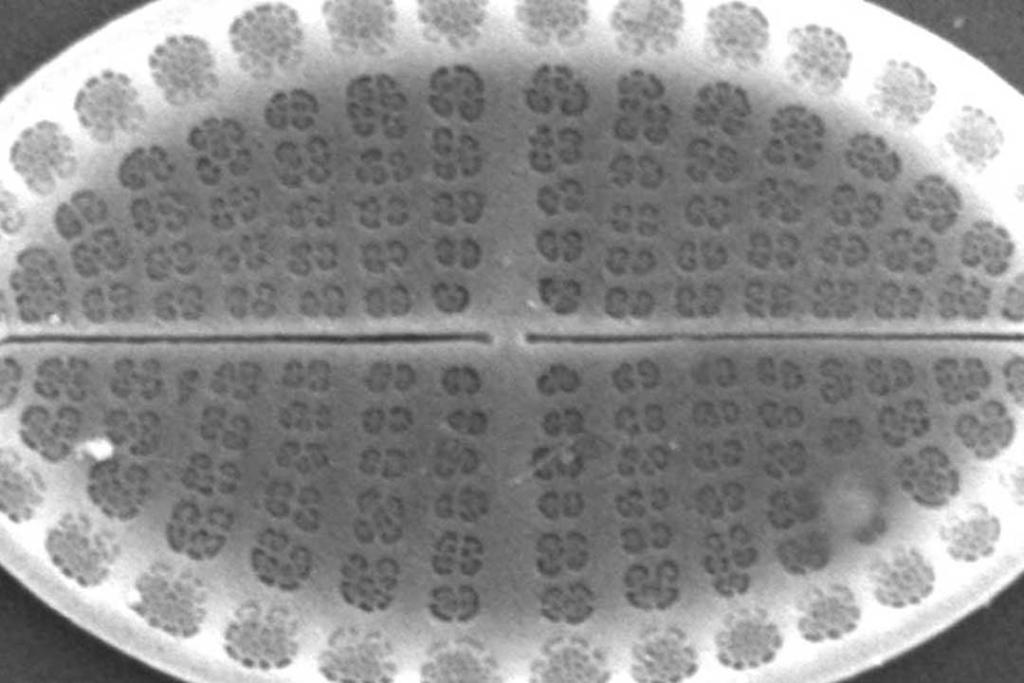Global Warnings: The life-supporting algae affected by Climate Change

People often stare blankly at me when I say my research on World Museum’s botany collections focuses on diatoms. I follow up with a quick explanation along the lines of they are single celled microscopic algae with a silica shell. Then explain that these are the base of the food chain and responsible for around a quarter of the oxygen we breathe. This usually gives bit more of a ‘Ahhh right’ response.
"To many people diatoms are an unknown life form and yet they underpin the whole marine food chain."
The special feature of diatoms is that each cell is enclosed in a complex, highly ornamented cell wall made not of organic compounds, as in most plants and algae, but of silica. They are a bit like a petri dish as they have two halves that fit together enclosing the cell contents. The outer silica wall is ornate with pores arranged in different patterns, which help to distinguish between the 200,000 different species. They live anywhere there is water, from the poles to the tropics. They live in both marine and freshwater and have a number of different lifestyles such as planktonic where they float in the water, or attached to surfaces such as rocks, seaweed or animals. Other species live amongst the mud or sand and are able to move within it. There is nothing more captivating than looking down the microscope and watching them zoom around in front of you.

Essentially these are single celled protists which photosynthesise - a process that converts sunlight into chemical energy which is then used by animals which feed on them. They are the unsung heroes of our planet, integral to life on earth. Diatoms produce around the same amount of oxygen as all of the world’s tropical rainforests combined.
Covering 70% of our planet, the oceans are central to life on earth being our largest habitat. The oceans play a vital role in the world’s carbon cycle by absorbing some of the carbon dioxide present in the atmosphere, they contribute to the regulation of the climate on a global scale. The carbon content present in the ocean is 50 times that in the atmosphere and 20 times that in the soil.
Diatoms are so numerous that they are one of the key organisms taking the greenhouse gas carbon dioxide out of the atmosphere in the carbon cycle. During photosynthesis, diatoms turn carbon dioxide into organic carbon and oxygen. They are responsible for 40% of the carbon produced in the world's oceans each year.
When diatoms die, they sink to the ocean floor, taking carbon out of the surface waters and locking it into deep ocean sediments below. However, not all of the diatoms make it to the bottom sediments. As they fall through the water column some are eaten by other organisms, which in turn will grow, reproduce and die, re-cycling more of the diatom’s organic carbon.
To many people diatoms are an unknown life form and yet they underpin the whole marine food chain; they actively participate in the transfer of carbon from the surface to the deep layers of the ocean and produce oxygen.
As our climate changes it will actively negatively affect where and when different species of diatom will grow. Some will need to change where they are geographically growing and many may become extinct. This will have knock on effects for all of the organisms that rely on them, who in turn will need to adapt to these changes or die themselves.

At World Museum, we study these amazing organisms to understand which species are growing where and if changes in our ecosystem are affecting their distributions. These tiny organisms are partly responsible for keeping the planet alive and by understanding them better we can help to conserve them.
We have a wonderful small collection of around 3000 diatoms within World Museum’s botany collection of 400,000 botanical specimens and associated items. The diatoms are stored mainly as microscope slides, and date from the 1800s through to present day. You can see them here.
Diatoms are just one small group among hundreds of thousands of species being adversely impacted by the climate crisis. See below our stories highlighting the effect of Climate Change in line with the UN Climate Change Conference, Cop27.
